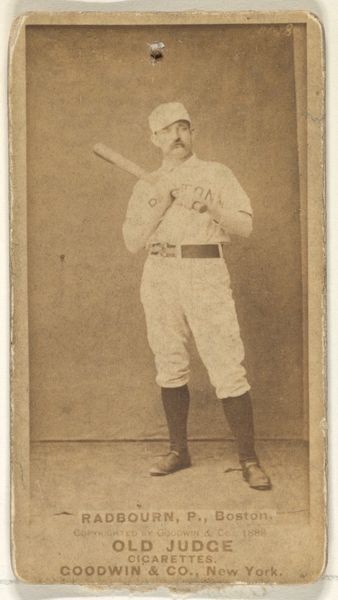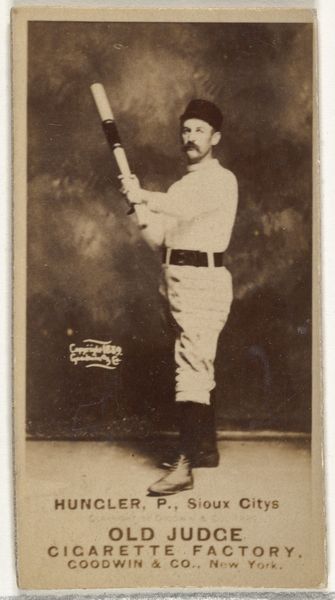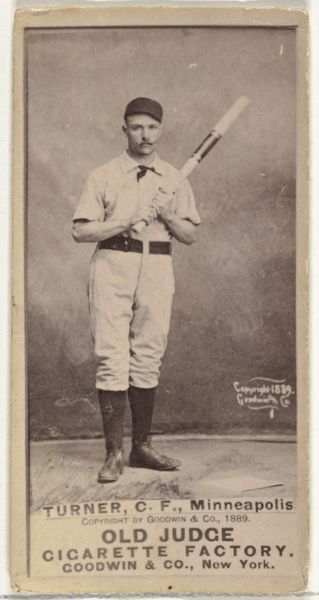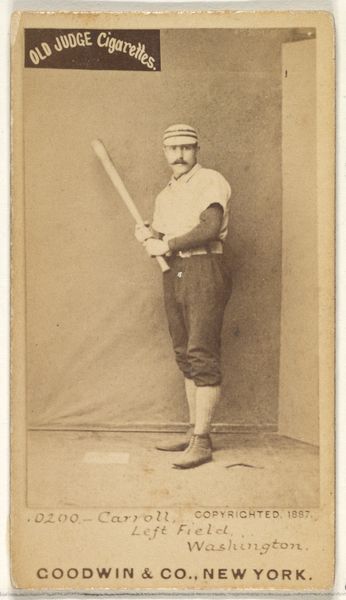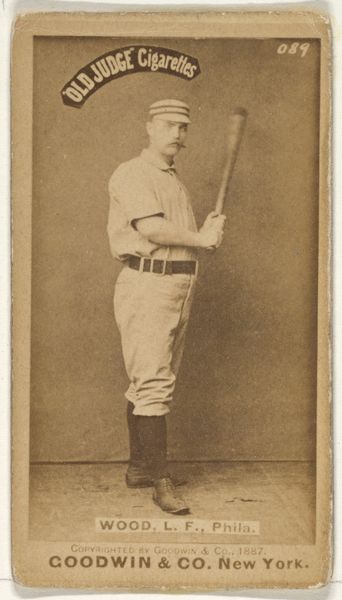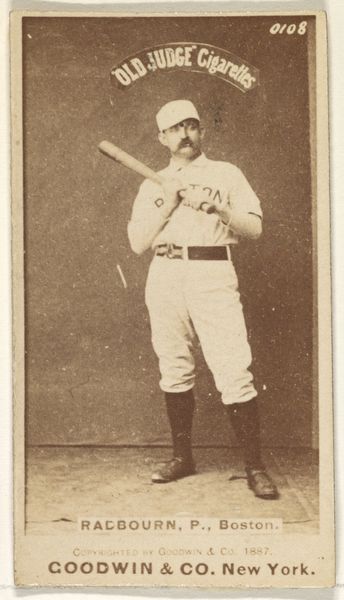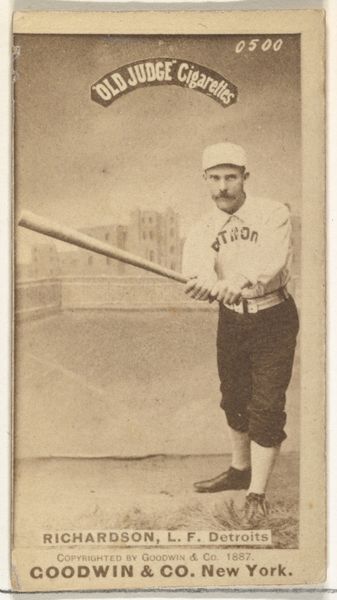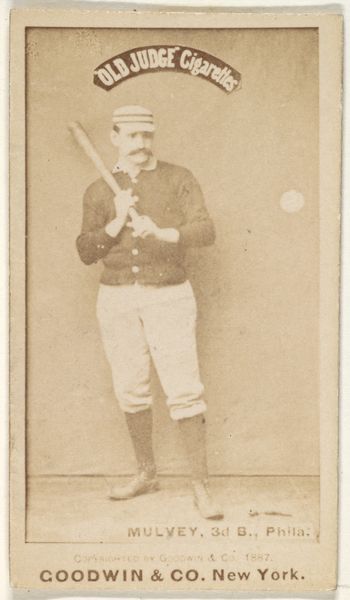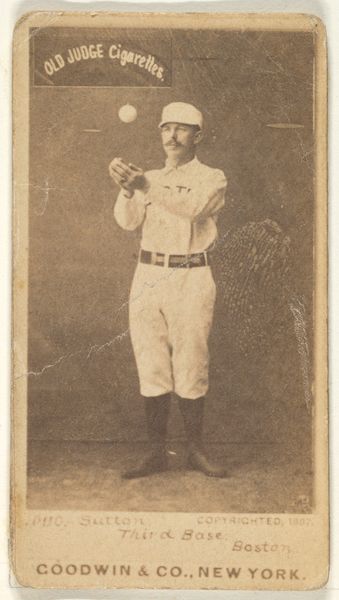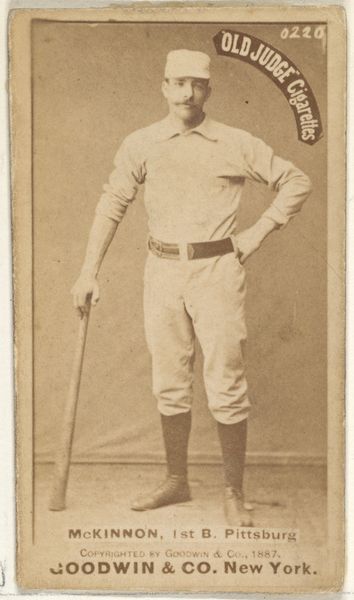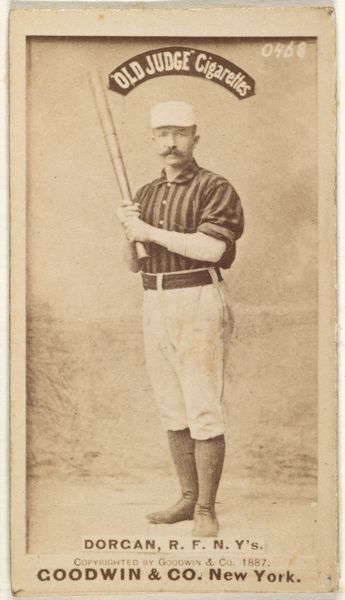
Adrian "Cap" Anson, Baseball Player, from World's Champions, Series 1 (N28) for Allen & Ginter Cigarettes 1887
0:00
0:00
drawing, lithograph, print, collotype
#
portrait
#
drawing
#
lithograph
# print
#
caricature
#
collotype
#
realism
Dimensions: Sheet: 2 3/4 x 1 1/2 in. (7 x 3.8 cm)
Copyright: Public Domain
Curator: So, here we have a lithograph of Adrian "Cap" Anson, the famous baseball player, created by Allen & Ginter Cigarettes in 1887, as part of their "World's Champions" series. Editor: Well, right away I'm struck by the… flatness. It's so frontal and contained; it gives the portrait a feeling of iconic stoicism, amplified by that very focused gaze and firm grip on the bat. Curator: Yes, these cards served a dual purpose: they were collected by fans, acting as proto-baseball cards, but their primary role was marketing. Featuring popular athletes promoted both baseball and, of course, cigarettes. Think of it as a glimpse into the evolving world of sports marketing. Editor: The simplicity of the color palette draws me in as well: muted tones, contrasting with the brighter red of the baseball bat. It emphasizes the bat as the key symbolic element. There’s almost a sculptural feel to his mustache and the fabric folds. Curator: Indeed. It's fascinating how these cards captured a growing sense of national identity through the popularity of sports. Baseball became interwoven with notions of American masculinity and civic pride. But let's not forget the deeply problematic association with cigarette culture. The targeting of this advertisement would soon face greater scrutiny and condemnation. Editor: You're right. Even in the rendering of the face, there's a hint of caricature – emphasizing features to create a recognizable, almost legendary persona. I also appreciate the textural variation achieved in the print. Curator: Exactly. This image of Anson, embedded in a commercial context, also fueled ideas of the hero athlete. By offering up such images, tobacco companies made icons into marketable commodities. The implications of this relationship between sports, celebrity, and commercial endorsement continues to shape our modern sporting landscape. Editor: It is interesting to note how art transforms into consumer objects. In essence, that relationship alters one's perception. Thank you. Curator: My pleasure. Looking at Anson here gives us insight into the relationship of sport, early marketing techniques, and society.
Comments
No comments
Be the first to comment and join the conversation on the ultimate creative platform.
